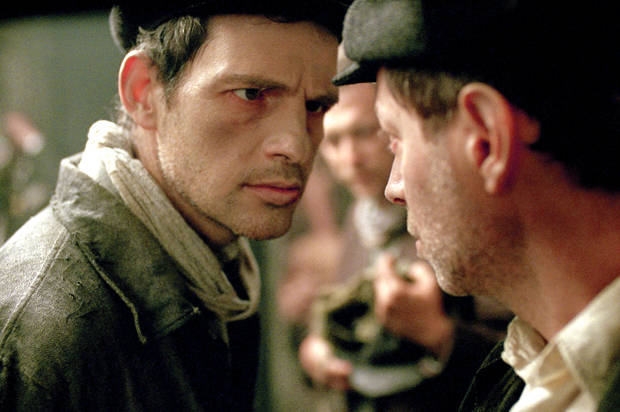
You may suspect there are no more untold stories about the Holocaust, the central signifying event of the 20th century, or at any rate no new ways of telling them. I suspected that myself, but “Son of Saul,” the riveting debut feature from Hungarian director László Nemes, proves otherwise. Gripping from its first frame to its last, and ending with a shot of unforgettable and heartbreaking simplicity – just a stand of trees in a Polish wood, through which we have seen a small boy running away, stirring in a gentle breeze – “Son of Saul” is a work of superlative filmmaking craft and moral intensity.
Most of the film is shot in medium close-up or extreme close-up, so there are often background or foreground events occurring out of focus that we can only partly apprehend. (Sometimes we may not want to.) For most of the running time, cinematographer Mátyás Erdély (shooting on old-school 35mm film) remains tightly focused on the face of a concentration-camp inmate named Saul Ausländer, who is played by the remarkable Hungarian actor Géza Röhrig. If my rudimentary German does not fail me, Saul’s last name means “foreigner,” and the clear implication is that (like the actor Röhrig) he is a Hungarian of German background, who may understand more of the Nazi guards’ language than he lets on.
Saul is a Sonderkommando, a Jewish inmate compelled to work as slave labor in a death camp. Although the camp in “Son of Saul” has been identified as Auschwitz, it might as well be Treblinka or Belzec or Sobibór or a number of other places. If this is indeed Auschwitz, we are late in World War II, probably the summer or fall of 1944, when the tide of war had turned decisively against Germany and Hitler’s administrators devoted considerable resources to exterminating as many Jews as possible during the time left to them. Of course the Nazi regime had already committed unforgivable war crimes by that time, but one measure of its insanity lies here: Faced with imminent defeat, the Germans did not make the logical decision to abandon the Final Solution and pour all available money and manpower into military counterattack. It would appear they decided that killing Jews was more important than winning the war.
We never see that level of contest in Nemes’ film, but Saul and his fellowSonderkommando have no illusions about what’s going on. They have been selected from most able-bodied of male arrivals, and they are being kept alive for a few months, with enough food and sleep to sustain them, because the SS needs them to perform the menial labor that keeps the camp running. For the first time in any Holocaust movie I can remember, we understand a death camp as an industrial production system – as a workplace built around repetitious tasks, with laborers who shirk and complain and steal and bosses who grumble, make unreasonable demands, take bribes and pass the buck.
Is it obscene to consider the gas chambers of Auschwitz as a factory, not inherently unlike one where trousers are sewn or automobiles banged together? (Or where cattle are slaughtered, to take the obvious parallel.) Of course it is, but that was precisely the displacement mechanism that allowed the officers, guards and inmates to move from one day to the next in a semblance of normal behavior. The industrial process in which Saul works is mass murder, to be sure, and its principal output is dead bodies by the thousands, which create an increasingly difficult disposal problem. (The men, women and children to be dragged from the gas chambers are always described as “pieces” by the guards.) As in any industrial process, there are important byproducts as well. One of Saul’s jobs is to pull down and sort all the clothing that new arrivals have hung on hooks before being sent to the “showers,” looking for hidden gold, jewelry and other valuables.